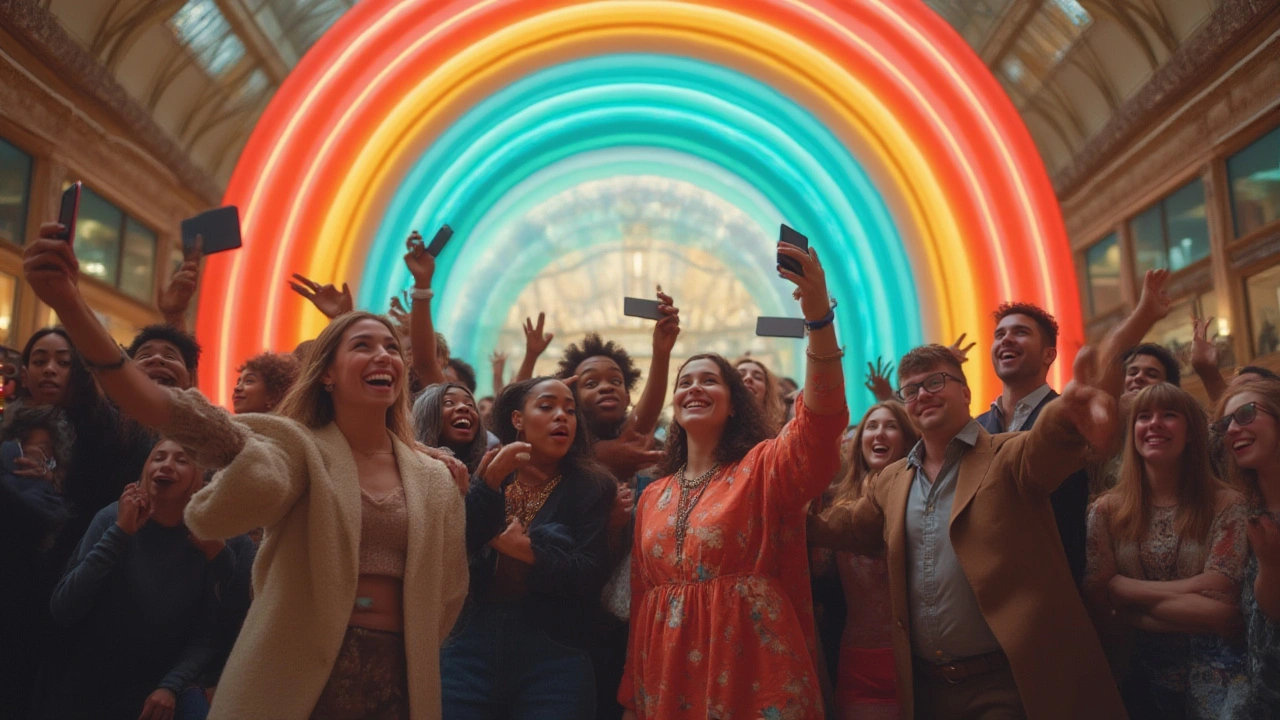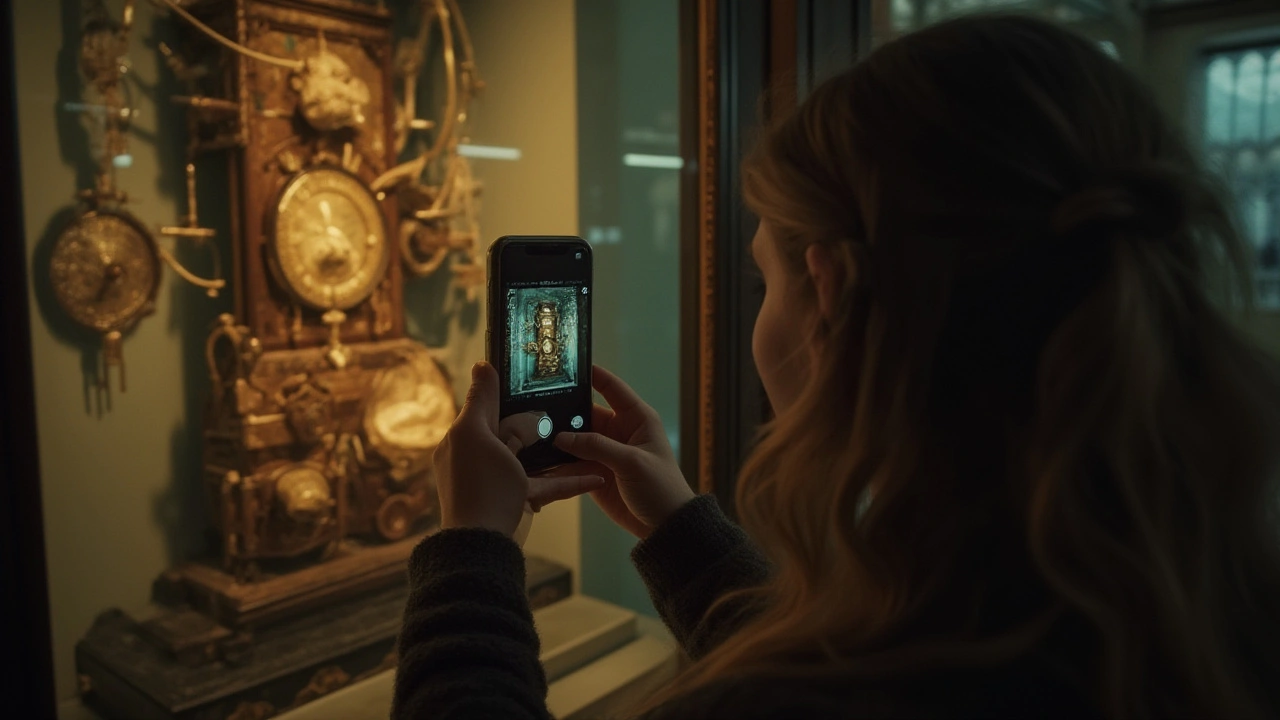London’s Most Instagrammable Museums and Their Must-See Exhibits

You know the instant thrill that comes from stumbling across an absolute gem in London—a place that not only opens your eyes, but also fires up your phone camera reflexes? If you’re navigating museum life in London, it’s hard not to notice how the city’s cultural halls have become a playground for the Instagram generation. With summer crowds weaving through South Kensington, teenagers striking “candid” poses beside towering dinosaurs, and creative types seeking colour pops for their feeds, London’s museums hustle harder than ever to stay snap-worthy. Forget those ‘quiet please’ vibes from decades past—London attractions know they need to catch the eye, ignite curiosity, and deliver backgrounds worthy of endless double taps. Here’s a look at the most Instagrammable museums in London, the stories behind their standout exhibits, and hands-on tips to level up your next museum photo session.
London Museums With Peak Instagram Appeal
Natural History Museum. That blue whale skeleton soaring above Hintze Hall isn’t just a London highlight—they literally cleared out a Victorian dinosaur to make room for it. Snap those grand staircase pictures and linger by the fossils, but also duck into the minerals gallery. The giant amethyst geode will make your phone camera beg for another shot. Tip: Visit right at opening or after 4 p.m. for fewer crowds, giving you a shot at empty halls and moody light cutting through those stained glass windows. Basil claims the animatronic T-Rex is the main event, but for pure Instagram joy? It’s the shadows and arches that never get old.
Victoria and Albert Museum. The V&A’s cast courts give you that ‘lost in a European fairy tale’ snap—all arches, marble, and intrigue. The Chihuly glass sculpture hanging in the main entrance is like something dreamt up in a psychedelic fantasy. If you crave soft natural light, find the John Madejski Garden at the centre for water-reflection portraits (sunshine willing). Design geeks should hit the fashion gallery: rare gowns, pop couture, and wild hats guarantee statement photos. Remember to check what travelling installations are on—last autumn’s Alice in Wonderland immersive show filled feeds with technicolour magic.
Tate Modern. The Turbine Hall is the city’s premier stage for mega-sized art. From giant slides to mist machines hanging from the ceiling, every year seems to raise the bar. The best Instagram trick? Tilt the wide-angle upwards or stand your mate centre-stage for that ‘tiny human, endless space’ look. Don’t just stick to the lower levels—the Blavatnik Building’s viewing deck offers panoramic city shots and a break from the usual art scene. Myla swears by the bright, blocky canvases in the main galleries for fashion shots. Don’t forget to swing by the Tate’s café terrace for coffee and cityscape views.
Science Museum. Not just for school trips, honestly. For an unexpectedly cool shot, try the gallery of timepieces on the second floor—rows of ornate clocks create lines and symmetry that make your feed look downright disciplined. Highlight: The Exploring Space section, with rockets and satellites looming overhead—posing under a real Apollo 10 command module absolutely grabs attention. Bonus tip for locals: New science playgrounds upstairs let kids get hands-on while adults sneak off for a breather and a picture or two by the steam engines downstairs.
The British Museum. Home to ancient icons like the Rosetta Stone and those ‘Elgin Marbles’ (which, drama aside, look great in moody black-and-white edits). The real Instagram hero here is the Great Court’s glass roof; catch the latticework at golden hour and you’ll rival any travel influencer. Look for the lesser-visited rooms: the Mesoamerican crystal skull is unnervingly photogenic, and statues in the Assyrian gallery are all dramatic poses and sharp lighting. For museum after-hours experiences, book one of their Friday late sessions—less foot traffic, moodier halls.
| Museum | Instagram Hotspot | Best Time to Visit | Hidden Gem |
|---|---|---|---|
| Natural History Museum | Hintze Hall, blue whale | Early morning, late afternoon | Minerals gallery |
| V&A | Chihuly chandelier, Cast Courts | Weekdays, 10-11AM | John Madejski Garden |
| Tate Modern | Turbine Hall, roof terrace | Late afternoons | Blavatnik viewing deck |
| Science Museum | Exploring Space, timepieces | Before noon | Steam engines gallery |
| British Museum | Great Court | Friday lates | Mesoamerican Hall |
These mainstays make up London’s strongest social-media circuit, but don’t sleep on smaller places. Instagrammable gems like the Museum of the Home (killer 70s living room sets) or the Design Museum’s hyper-modern walls draw big local crowds hunting for less-obvious backdrops. The London Mithraeum’s ethereal lighting and ancient Roman ruins routinely pop up in art student moodboards. Even the Horniman Museum’s over-stuffed walrus has Twitter clout. When it comes to scoring that unique shot, veer off the tourist path and drop your pin somewhere overlooked.

How to Nail the Perfect Museum Instagram Shot
Lighting is everything. These old buildings love natural light, but the British weather doesn’t always cooperate. If you’re chasing those luminous painterly shots, time your trip when the sun is out—mid-morning usually brings softer rays through skylights or grand domes. If it’s grey (because, well, London), don’t despair. Longer exposures or just embracing the mood can lend drama—think shadowy corners and a bit of grit. Local museums are mostly cool with cameras, but remember: lots ban tripods and flash. Instead, boost your shot with steady hands or invest in a small portable tripod that fits in a jacket pocket.
Composition changes the story your photo tells. Look for lines that pull the eye—staircases, ceilings, and long corridors are perfect. Consider placing your subject (friend or yourself) off-centre for some artistic edge. On busy weekends, patience pays off; wait a few seconds, let groups shuffle past, and snag your frame with minimal fuss. Many locals swear by visiting during lunch hours or just before closing for less crowded backgrounds.
Dress to match (or contrast) your target backdrop. A pop of colour stands out against the V&A’s white marble, while muted tones look classy beneath the British Museum’s arches. My mate Eddie always says, “Treat dressing for the Tate like prepping for a gig. Clash with the art and you instantly look on-trend.” Accessories work well if you want to add a touch of whimsy—a bright umbrella, a vintage camera, or a fedora each tell different stories.
Editing matters. London’s cloudy skies can wash out your photo colours, but with a quick edit—bumping up the contrast, sharpening details, adding a subtle vignette—you can create a showstopping snap from even the dreariest day. Don’t be afraid to use apps like VSCO or Lightroom Mobile for quick tweaks. Hashtags like #MuseumSelfieLondon or #LondonArtLife get your shot seen by more locals, with popular accounts like @londonviewpoints often sharing the city’s most striking snaps. A recent digital arts report from Tate confirmed that “interactive online experiences now play a vital role in visitor engagement, encouraging more creative participation both inside and outside museum walls.”
“Museums are no longer just about preserving the past; they’re inspiring visitors to help shape visual culture in the present—one post at a time.”
Etiquette: keep photo sessions respectful. Staff see dozens of posed scenes every day, but patience and politeness matter in places where others might seek a quieter visit. Dodging rope barriers, climbing on plinths, or hogging spaces for ages doesn’t just annoy wardens—it means you’re crossing lines real Londoners know not to cross. Good rule of thumb: move with the flow, step aside when finished, and if someone looks like they need that perfect frame after you, let them have it—there’s every chance you’ll end up in their camera roll, too.
- Do check each museum’s photo policy—occasional exhibitions ban snaps due to artwork loans or copyright rights.
- Don’t use flash on priceless, centuries-old artwork. That “quick pop” can degrade pigments.
- Bring a power bank. London’s biggest museums almost always drain your battery halfway through a visit.
- Weekdays and rainy days mean smaller crowds, which helps with both photos and mooching around undisturbed.
- Some museums host after-dark events and late openings. These sessions often include special lighting, music, and reduced admission—perfect for unusual photos and a one-off vibe.
Finally, remember: the best museum shots aren’t just pretty—they tell a genuinely London story. Capture a friend laughing beneath a Greek statue, a rainy pavement outside the Tate, or the mad rush for umbrellas in the V&A’s garden as the sky opens up. These raw, unstyled moments connect with people far beyond a perfectly filtered frame, showing London culture as it really is—busy, fun, and just a bit unpredictable.
Beyond the Selfie: What Makes London’s Museum Exhibits So Instantly Iconic?
Everyone’s been there: you wander into a quiet corner, glance up, and suddenly realise the exhibit you’re facing has cropped up in hundreds of Instagram stories. What is it about London’s museum scenes that makes them so irresistible to the camera? Partly, it’s the scale and ambition. When you look at the Natural History Museum’s whale, it’s not just impressive—it’s jaw-dropping, with a story as arresting as any blockbuster art. The blue whale, nicknamed ‘Hope,’ stretches nearly the length of a double-decker bus and weighs in at 4.5 tonnes. Its installation required months of engineering wizardry, and it’s designed to inspire awe about conservation and our shared future.
Colour and light play huge roles. Galleries like the Tate Modern or the V&A choose exhibits specifically for their visual punch—intense colours, bold shapes, and spaces built for interaction, not just silent admiration. Think of Tate’s recent Yayoi Kusama Infinity Rooms—hundreds queued daily just to grab a few moments floating amidst a sea of lights. And it’s not all about art “for art’s sake.” Museums in London have keyed in on the experience economy: they want you to touch, share, joke, and post. When the Science Museum installed its space travel pods, staff ditched quiet signs for roving explainer guides—inviting people to ask questions, take photos, and join in experiments.
This approach isn’t just a trend, it marks a shift in how the city values creativity and culture. The British Museum’s “Friday Lates” have become a regular platform for DJs, pop-up workshops, and crowd-engagements that straddle education and festival territory. Myla’s favourite bit? Getting her own badge pressed in the printmaking station, then modelling it beside a 2,000-year-old statue. “It’s mad,” she says, “to think my stuff might last two minutes, and that one will last forever.”
Another part of the appeal: museums tap into timeless themes while blending them with fresh ideas. The V&A’s blockbuster summer exhibition on Balenciaga linked runway fashion to historic textiles, inviting punters in for a selfie beside rare outfits—which, of course, exploded across Instagram. Meanwhile, quirky places like the Postal Museum offered “under-London” mail train rides, letting visitors snap candid shots in actual underground tunnels while learning the city’s hidden history.
There’s something deeply democratic about this. London museums aren’t just for experts, posh tourists, or schoolchildren—they’re open ground for anyone who wants to look, explore, and share. Recently, after standing in line for Kusama’s mirrored rooms, I overheard a visitor whisper to her friend, “It’s cooler than actual reality.” At that moment, she grinned, raised her phone, and snapped a shot. All around us, strangers traded tips, loaned phone power banks, and marvelled at how wild and vivid museum life can get.
So if you’re in London this year, don’t just scroll past another gallery photo—step inside, charge your camera, and chase your own unforgettable frame. Snap old statues, chase light through stained glass, or capture the smirk on your child’s face as they discover a galactic rock or Victorian armchair. There’s always a new angle, a fresh story, and a very London sense of adventure behind every museum door.